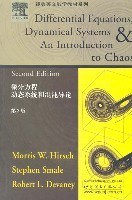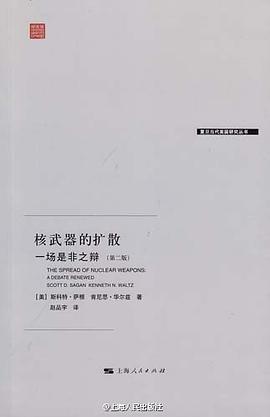微分方程动态系统和混沌导论
内容简介
30年来,动力系统的数学理论与应用有了很大发展。30多年前还没有高速的台式计算机和计算机图像,“混沌”一词也没有在数学界使用,而对于微分方程与动力系统的研究兴趣主要仅限于数学界中比较小的范围。到今天,处处有计算机,求微分方程近似解的软件包已得到广泛运用,使人们从图形中就能看到结果。对于非线性微分方程的分析已为广大学者所接受,一些复杂的动力学行为,如马蹄映射、同宿轨、Lorenz系统中揭示出来的复杂现象,以及数学方面的分析,使学者们确信简单的稳定运动,如平衡态和周期解己不总是微分方程解的最重要的行为,而混沌现象揭示出来的美妙性态正促使各个领域的科学家与工程师细心关注在他们自己领域中提出的重要的微分方程及其混沌特性。动力系统现象在今天已出现在几乎每个科学领域中,从化学中的振荡Belousov-Zhabotinsky反应到电子工程中的混沌Chua电路,从天体力学中的复杂运动到生态系统中的分岔。
本书是30年前世界著名的动力系统专家赫希(M. Hirsch)和斯梅尔(S. Smale)合著的“Differential Equations, Dynamical Systems and Linear Algebra”一书的修订本,原书初版后被许多高校作为动力系统入门的标准教材,多年来在国际上产生较大影响。这次修订本新增加一名作者,即著名的混沌理论专家德瓦尼(R. Devaney)。
30年来,动力系统的数学理论与应用有了很大发展,动力系统现象已出现在几乎每个科学领域中,从化学中的振荡Belousov-Zhabotinsky反应到电子工程中的混沌Chua电路,从天体力学中的复杂运动到生态系统中的分岔。
这样,作为一部微分方程与动力系统的教材来,有着比上世纪70年代更加广泛多样的读者群体。因而与初版相比较,本书做了以下几方面较大的改动:
1.线性代数内容做了压缩。去掉了在抽象的线性空间及赋范空间的相应推广。不再包含关于n阶矩阵约化为标准型的复杂证明,改为论述不高于4阶的矩阵。
2.详细讨论了Lorenz吸引子、Shil’nikov系统和双卷吸引子的混沌特性。
3.新增许多应用实例,原有实例也做了更新。
4.新增若于章节讨论离散动力系统。
5.主要讨论光滑系统,因而简化了许多定理的假设。
本书由三编组成:第一编论述微分方程的线性系统及一阶非线性方程;第二编是本书的核心,集中讨论以二维为主的非线性系统及其在各个方面的应用;第三编处理高维系统,特别强调在平面系统中不会出现的混沌特性,以及通过离散化系统来研究这类性质的基本方法。
本书作为微分方程和动力系统方面的教材有着较广泛的适用性,其读者对象不仅是理工科大学数学、应用数学及相关专业的师生,而且也适用于相关领域的科技工作者。
......(更多)
作者简介
Smale是当代大师级的数学家,Hirsch也在顶级数学家之列。
......(更多)
目录
CHAPTER 1 First-Order Equations
1.1 The Simplest Example
1.2 The Logistic Population Model
1.3 Constant Harvesting and Bifurcations
1.4 Periodic Harvesting and Periodic Solutions
1.5 Computing the Poincard Map
1.6 Exploration:A Two-Parameter Family
CHAPTER 2 Planar Linear Systems
2.1 Second-Order Differential Equations
2.2 Planar Systems
2.3 Preliminaries from Algebra
2.4 Planar Linear Systems
2.5 Eigenvalues and Eigenvectors
2.6 Solving Linear Systems
2.7 The Linearity Principle
CHAPTER 3 Phase Portraits for Planar Systems
3.1 Real Distinct Eigenvalues
3.2 Complex Eigenvalues
3.3 Repeated Eigenvalues
3.4 Changing Coordinates
CHAPTER 4 Classification of Planar Systems
4.1 The Trace-Determinant Plane
4.2 Dynamical Classification
4.3 Exploration:A 3D Parameter Space
CHAPTER 5 Higher Dimensional Linear Algebra
5.1 Preliminaries from Linear Algebra
5.2 Eigenvalues and Eigenvectors
5.3 Complex Eigenvalues
5.4 Bases and Subspaces
5.5 Repeated Eigenvalues
5.6 Genericity
CHAPTER 6 Higher Dimensional Linear Systems
6.1 Distinct Eigenvalues
6.2 Harmonic Oscillators
6.3 Repeated Eigenvalues
6.4 The Exponential of a Matrix
6.5 Nonautonomous Linear Systems
CHAPTER 7 Nonlinear Systems
7.1 Dynamical Systems
7.2 The Existence and Uniqueness Theorem
7.3 Continuous Dependence of Solutions
7.4 The Variational Equation
7.5 Exploration:Numerical Methods
CHAPTER 8 Equilibria in Nonlinear Systems
8.1 Some Nustrative Examples
8.2 Nonlinear Sinks and Sources
8.3 Saddles
8.4 Stability
8.5 Bifurcations
8.6 Exploration:Complex Vector Fields
CHAPTER 9 Global Nonlinear Techniques
9.1 Nullclines
9.2 Stability of Equilibria
9.3 Gradient Systems
9.4 Hamiltonian Systems
9.5 Exploration:The Pendulum with Constant Forcing
CHAPTER 10 Closed Orbits and Limit Sets
10.1 Limit Sets
10.2 Local Sections and Flow Boxes
10.3 The Poincare Map
10.4 Monotone Sequences in Planar Dynamical Systems
10.5 The Poincare-Bendixson Theorem
10.6 Applications of Poincare-Bendixson
10.7 Expl0ration:Chemical Reactions That Oscillate
CHAPTER 11 Applications in Biology
11.1 Infectious Diseases
11.2 Predator/Prey Systems
11.3 Competitive Species
11.4 Exploration:Competition and Harvesting
CHAPTER 12 Applications in Circuit Theory
12.1 An RLC Circuit
12.2 The Lienard Equation
12.3 The van der Pol Equation
12.4 A Hopf Bifurcation
12.5 Exploration:Neurodynamics
CHAPTER 13 Applications in Mechanics
13.1 Newton’S Second Law
13.2 Conservative Systems
13.3 Central Force Fields
13.4 The Newtonian Central Force System
13.5 Kepler’s First Law
13.6 The Two-Body Problem
13.7 Blowing Up the Singularity
13.8 Exploration:Other Central Force Problems
13.9 Exploration:Classical Limits of Quantum Mechanical Systems
CHAPTER 14 The Lorenz System
14.1 Introduction to the Lorenz System
14.2 Elementary Properties of the Lorenz System
14.3 The Lorenz Attractor
14.4 A Model for the Lorenz Attractor
14.5 The Chaotic Attractor
14.6 Exploration:The Rossler Attractor
CHAPTER 15 Discrete Dynamical Systems
15.1 Introduction to Discrete Dynamical Systems
15.2 Bifurcations
15.3 The Discrete Logistic Model
15.4 Chaos
15.5 Symbolic Dynamics
15.6 The Shift Map
15.7 The Cantor Middle-Thirds Set
15.8 Exploration:Cubic Chaos
15.9 Exploration:The Orbit Diagram
CHAPTER 16 Homoclinic Phenomena
16.1 The Shil’nikov System
16.2 The Horseshoe Map
16.3 The Double Scroll Attractor
16.4 Homoclinic Bifurcations
16.5 Exploration:The Chua Circuit
CHAPTER 17 Existence and Uniqueness Revisited
17.1 The Existence and Uniqueness Theorem
17.2 Proof of Existence and Uniqueness
17.3 Continuous Dependence on Initial Conditions
17.4 Extending Solutions
17.5 Nonautonomous Systems
17.6 Differentiability of the Flow
Bibliography
Index
......(更多)
读书文摘
......(更多)






